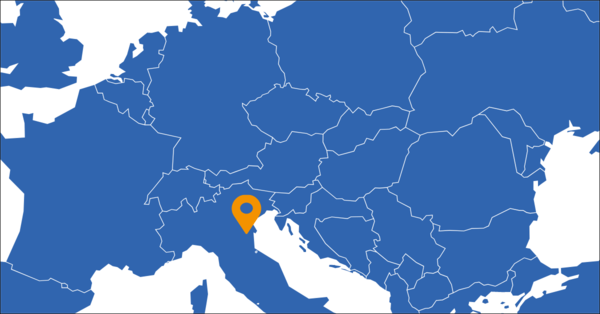Visit to the Italian Nature-Based Solution Implementation Site
Nature-Based Solutions (NBS) are adaptation measures to reduce the frequency and magnitude of hydro-meteorological hazards. However, NBS consist of natur...

Both the Italian frontrunning and replicating regions extend from the Panaro River in the eastern part of the Emilia-Romagna region (Italy) to the coast of the Adriatic Sea within an area of 3000 km2. The whole area is part of the eastern sector of the Po Valley, an almost flat plain close to the mean sea level height. The target land for the intervention is composed of the riverbanks of the Panaro River bounding agricultural fields in the inner land and a natural reserve at the coast. Despite the vicinity of the sea, the climate is subcontinental with warm and humid summers and cold winters. The implication of climate is that vegetation in the flat inland is similar to central and east Europe. The target coastal area is characterized by the Po Delta where salty wetlands follow sandy areas with low water retention.
In the Emilia-Romagna region, the challenges of flooding and drought afflict both the river and coastal zones. The vulnerable natural reserve ecosystem is under constant threat from salt intrusion, storm surge, and coastal erosion, leading to the loss of biodiversity. Furthermore, these environmental stressors pose significant dangers to existing natural and artificial infrastructures, compounding the region's multifaceted struggle to maintain ecological balance.
The participation of the public in LAND4CLIMATE is a crucial component. The key focus of the regional project partners is extending invitations to local authorities and landowners within the catchment area to engage in the preparation and implementation of the Nature-Based Solutions. Private landowners have been specifically targeted and captivated to actively participate in the implementation of the project. The local project partners look forward to establish a sustained communication with local landowners, working together for a healthy living and economic space of the region. Word-spreading in the region and locals participation to the project are strongly encouraged.
Both the Italian frontrunning and replicating regions span from the Panaro River in the eastern part of the Emilia-Romagna region to the Adriatic Sea coast, covering an expansive area of 3000 km2. These regions share comparable landscapes and climatic conditions, establishing a harmonious correspondence that makes them well-suited and ideal partners for the project's requirements. The similarity in geographical and environmental characteristics enhances the effectiveness of collaboration, enabling the exchange of insights and solutions.